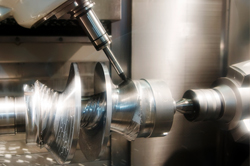Applications
METAL PROCESSING
Encoders of ITALSENSOR have for years successfully used on machines for molding and in particular on hydraulic, pneumatic and electric presses. The design of devices provides for the adoption of solutions that make the encoder suitable to work in mechanically hostile environments especially from the point of view of vibrations and mechanical shock. Particularly suitable for these applications are the encoders with magnetic technology and versions of optical encoder capable of withstanding the difficult working conditions of the plant always guaranteeing maximum performance and efficiency in time
STEEL INDUSTRY
The metallurgical industry requires robust and reliable devices both from the mechanical and environmental point of view, high mechanical vibration, high temperatures, dust and liquids. Materials and components used in the manufacturing of Italsensor transducers for these fields of application provide high reliability and the maximum degree of environmental protection to dust and liquids along with a high operating temperature range over 100 ° C. Customizations are possible in both the mechanical and electronic structure to meet any requirement of the end user.
Particularly suitable for lifting equipment (cranes in steel mills) used in the metallurgical industry are encoders equipped with centrifugal relay groups which make it possible to detect and then block any phenomena of conduct not checked the cables lifting beams providing valuable assistance on prevention of accident to workers. Each group encoder- centrifugal relay can be customized and calibrated for the specific needs.
Solutions used in the metallurgical industry involve the use of incremental and absolute encoders, in particular point out product lines in magnetic technology developed by ITALSENSOR. These devices can be customized by providing a high degree of reliability associated to the fact that you do not have moving parts (the absence of ball bearings) and a high range of operating temperatures over 100 ° C all for the benefit of the life of the transducer, which translates into a reduction of maintenance interventions and ensures continuity in the production plant.













